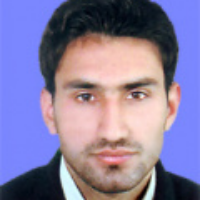Assessment and evaluation of the project of cultural-social regeneration of public spaces with the approach of improving environmental quality and neighbourhood identity The case study: historical walkways of Kashan city
The absence of an evaluation mechanism in the planning system has caused, after the implementation of the plans and projects for the reconstruction of the ancient cultural-historical contexts, no effort to be made to evaluate such programs, and the consequences of these plans should be addressed and addressed. The current research aims to measure and evaluate the cultural-social regeneration project of public spaces with the approach of improving the environmental quality and identity of neighborhoods in the historical walkways of Kashan city. The research method is descriptive-analytical and survey, and structural equations and sample t-test were exerted to analyze the data. The results of the t-test exam showed that the status of neighborhood authenticity, sense of belonging, and aesthetics indicators in the studied area are unfavorable and below the average level of quality. The evaluation of each indicator of social interactions, livability, and security of the neighborhoods showed that the indicators are in a semi-optimal state. Also, the results of the second-order factor model showed that giving importance to the regeneration index in the studied neighborhoods increased the security index to 0.98, the sense of belonging index to 0.94, the livability index to 0.74, the neighborhood authenticity index to 0.49, the social interactions index to 0.44, and the aesthetic index to 0.34. Therefore, today, one-dimensional importance to urban regeneration projects in neighborhoods cannot alone lead to success in urban spaces. A coherent, continuous, and desirable structure should always be considered from all physical-visual, functional, perceptual, semantic, and environmental dimensions. The needs of citizens are prioritized.
-
An Evaluation of the Spatial Effects of Development- Stimulationg Projects on the Vivacity and Liveliness of Worn-out Urban Texture (A Case Study of the Designe of Symbolic Square around Mobarakeh's Old Bazzar)
Frhnaz Mosayy, *, Rasol Hidari
Journal of Spatial Planning, -
Pathology of Instability Processes of the Spatial System of Medium-Sized Cities: Kashan Case Study
*, Kamran Dolat Yarian
Human Geography Research Quarterly,


